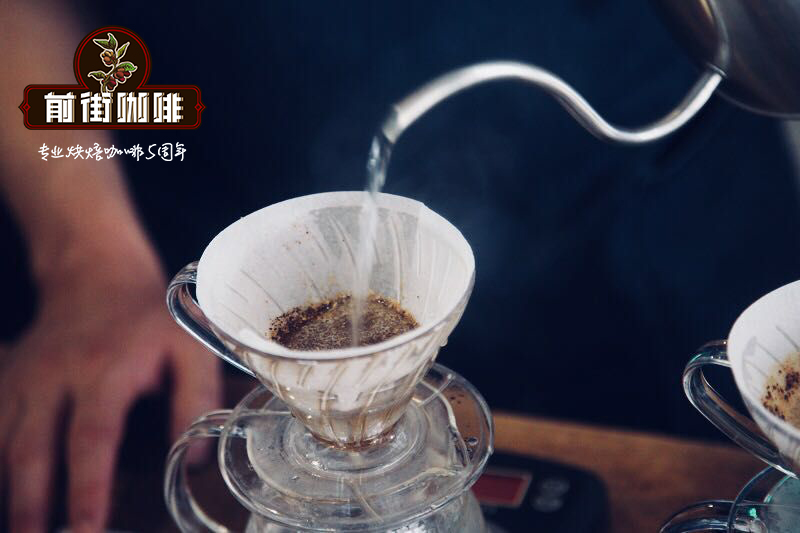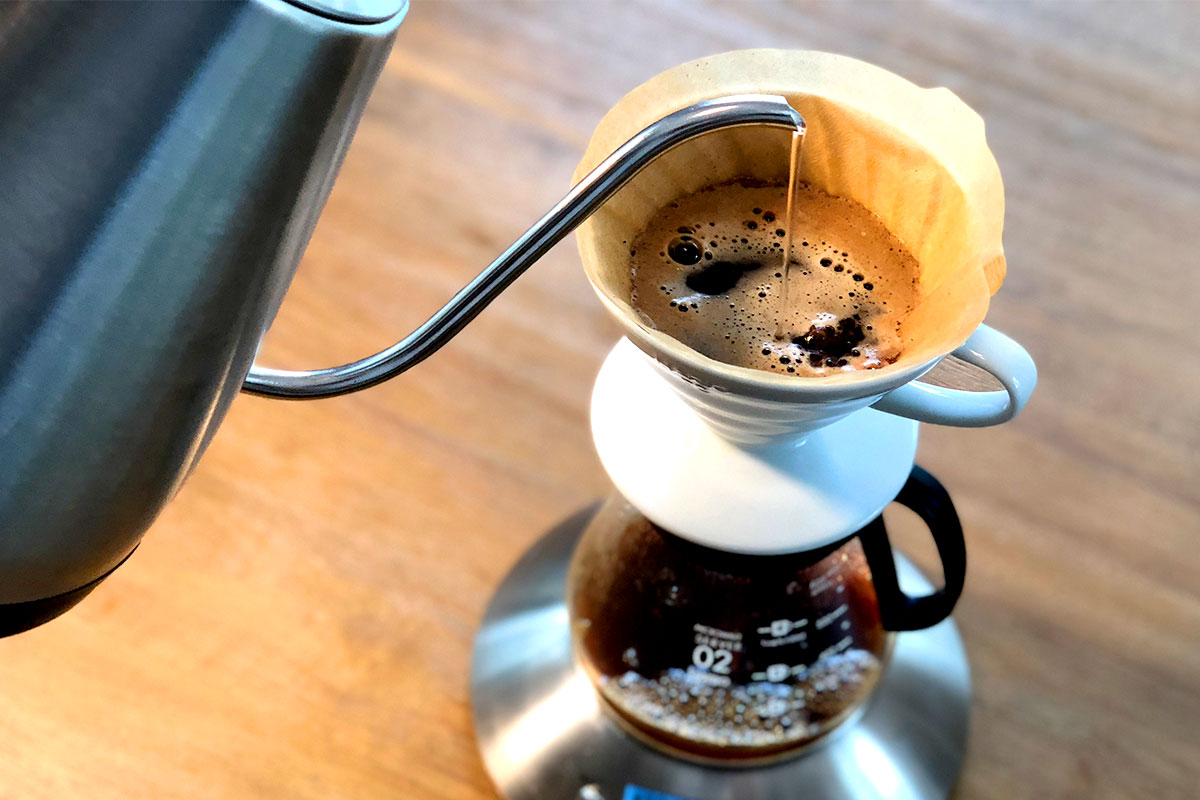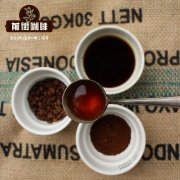How should the insufficient extraction of espresso be adjusted? What is the channel effect of espresso?

Professional coffee knowledge exchange more coffee bean information please follow the coffee workshop (Wechat official account cafe_style)
Extraction can be said to be the most important but least understood part of coffee brewing. Extraction represents everything. If you can't even get a cup of coffee without extraction, here's the simplest but not 100% accurate statement:
Extraction is the use of water to bring out the substance of coffee.
It's easy to talk, but it's much harder to integrate and apply.
A lot of things happen when coffee is mixed with water, and the easiest thing to understand is that the water dissolves a lot of the flavor of coffee, which is almost the flavor you drink in the coffee cup. Only very fine coffee powder will affect the taste, but the fine powder is not considered in the extraction, because the fine powder only floats in the water during the extraction.
Overextraction (Over-extraction)-the concept of extraction rate must first be understood. According to the measurement standard of VST Coffee Refractometer (coffee refractometer, the official designated measuring instrument for a number of coffee international competitions), the reasonable coffee extraction rate (extraction yield) is between 18% and 21%. Of course, there are coffee people (such as Matt Perger) who pursue an extraction rate of slightly higher than 21%, but generally speaking. If the actual extraction rate exceeds the ideal extraction rate of this coffee bean, that is, the problem of over-extraction occurs. The roasting degree, variety and situation of each coffee bean are different, and the same extraction rate may be suitable for light-roasted Kenyan SL-28, but not for medium-roasted Brazilian Bourbon, light-roasted Bolivian Typica or a certain formula bean. Excessive extraction often leads to dark coffee liquids and oils (Crema), sometimes producing obvious air bubbles floating on the liquid surface, usually taking too long to extract (for example, more than 1 minute), and more than 10 seconds to see the first drop of coffee liquid. There are many reasons for excessive extraction, the common ones are: coffee powder is too fine grinding, water temperature is too high, extraction pressure is too high, filling pressure channel is too strong, and so on.
Underextraction (Under-extraction)-in contrast to overextraction, underextraction usually means that there are still many unextracted aromatic molecules in coffee powder, but the preset extraction time is over, that is, the commonly known extraction rate is less than 18%. When the extraction is insufficient, the coffee liquid may have a light yellow color and lack of coffee oil. the extraction time is usually too short (for example, the extraction is completed in 15 seconds), and the coffee is released like a stream of water under pressure. instead of the sticky feeling of honey flowing down during normal extraction, the above phenomena are all signs of insufficient extraction. There are many reasons for insufficient extraction, such as coarse grinding of coffee powder, low water temperature, insufficient extraction pressure, light filling pressure and so on. The taste is often with strong and astringent fruit acid, salty taste, water feeling and lack of due sweetness.
Uneven extraction (Uneven Extraction)-extraction is usually a combination of over-extraction and uneven extraction, the more common are: channel effect (Channeling), side channel effect (Side Channeling), doughnut extraction (Donut Extraction, or Edge Channeling outer ring channel effect) and so on.
So how should the deficiency of extraction be adjusted?
1. Insufficient extraction may be caused by channel effect, which leads to partial over-extraction and partial insufficient extraction.
The channel effect occurs at a certain point or block at the bottom of the filter cup, and there may be many reasons, such as the mixture of new and old powder after adjusting the bean grinder scale, uneven powder and Distribution, caking of coffee powder, etc. If you use a bottomless handle, you can see that the block is dark and no liquid flows through the initial stage of extraction. Sometimes there is a water column ejected because the pressure is too large and the range of water can pass through is very small. the influence of this phenomenon on the flavor can be great or small, depending on the scope and degree of the channel effect, and the greater degree will produce bitter, astringent and other defective flavor.
Channel effect can be improved by adding powder, cloth powder, pressing powder and so on.
2. The degree of grinding is not suitable, the ratio of powder to water and time of extraction are not suitable.
If the grinding degree is too rough, then the flow rate of coffee extraction will be accelerated, then the phenomenon of insufficient extraction will occur.
If insufficient extraction occurs when there is no channel effect on pressed powder, then the extraction can be done by adjusting the parameters.
END
Important Notice :
前街咖啡 FrontStreet Coffee has moved to new addredd:
FrontStreet Coffee Address: 315,Donghua East Road,GuangZhou
Tel:020 38364473
- Prev

Analysis of the extraction principle of hand-brewed coffee | what are the factors affecting hand-brewed coffee?
Professional coffee knowledge exchange more coffee bean information please follow the coffee workshop (Wechat official account cafe_style) hand flushing is not only an art, but also a science. The beauty of art is that some of them are abstract, magical, and secret, but they are often difficult to share, pass on, and verify. Science is because the extraction of coffee is based on science. With physical change
- Next

Brewing and sharing: how to brew Hawaiian boutique coffee Kona
Professional coffee knowledge exchange more information about coffee beans Please pay attention to the strong sour and sweet taste of the coffee workshop (Wechat official account cafe_style). The taste is smooth and smooth. Growing on volcanoes, Hawaii's unique volcanic climate gives Kona coffee its unique aroma and high-density artificial farming, so each bean can be said to be a pampered boudoir.
Related
- Beginners will see the "Coffee pull flower" guide!
- What is the difference between ice blog purified milk and ordinary milk coffee?
- Why is the Philippines the largest producer of crops in Liberia?
- For coffee extraction, should the fine powder be retained?
- How does extracted espresso fill pressed powder? How much strength does it take to press the powder?
- How to make jasmine cold extract coffee? Is the jasmine + latte good?
- Will this little toy really make the coffee taste better? How does Lily Drip affect coffee extraction?
- Will the action of slapping the filter cup also affect coffee extraction?
- What's the difference between powder-to-water ratio and powder-to-liquid ratio?
- What is the Ethiopian local species? What does it have to do with Heirloom native species?

